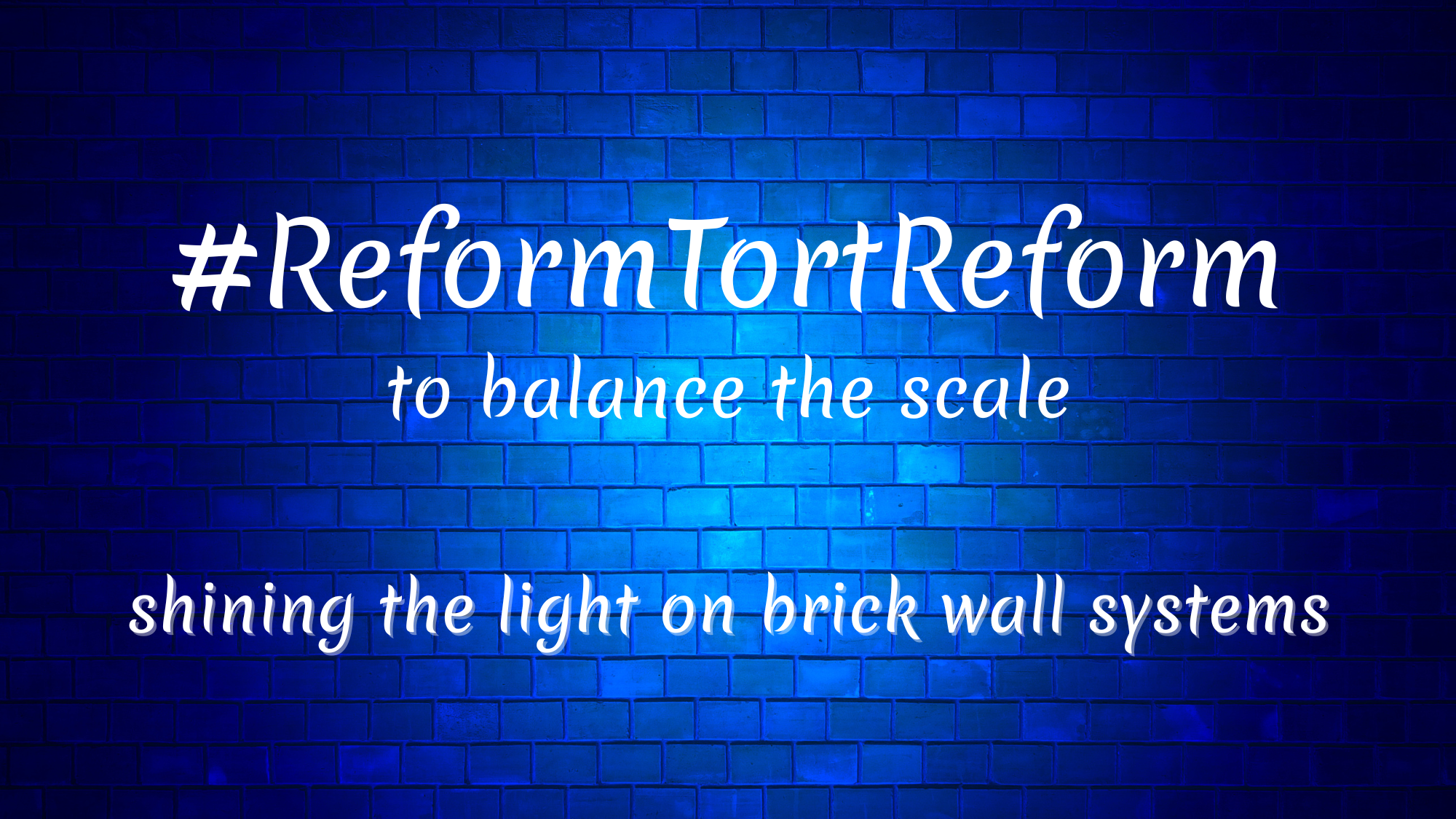THE ACCOUNTABILITY SERIES: What is #ReformTortReform About?, Part 5

a.k.a. - The Holding OhioHealth Hospital Accountable Series
The Accountability Series is a call for change — a public record and a reminder that patients deserve to be heard. Healthcare accountability should be standard, not a battle that injured patients and their families are forced to fight, only to be dismissed and left to pick up the pieces alone.
Through this series, I’m opening a window into an ongoing campaign — it’s an invitation for hospital decision-makers to finally step up after more than four years of denying the abuse and injuries I sustained by one of their surgeons. I am drawing from my personal malpractice journey, yet it mirrors untold numbers of malpractice journeys where the injured have been and will be shut out and failed by rigid, inhumane brick wall systems.
OhioHealth is the responsible hospital corporation. I will address each email message to their “Leadership” teams, which includes their president and other top administrators. Copies may also be sent to employees, the media, lawyers, and patient advocates.
We’re all human, and injuries happen. Medical professionals need and deserve legal protection, but so do patients. This is about accountability and systemic reform, not a personal attack.
This is about addressing the imbalance of power and confronting hypocrisy.
Subject: What is #ReformTortReform About?, Part 5 - 9/20/25
Dear OhioHealth Leadership Team:
It took me a long time to put it together that healthcare providers and their insurance companies are heavily protected by a rigged justice system in most states across the US.
Ohio has some of the most imbalanced laws in the entire US, with a statute of limitations for most malpractice injuries of just one year, and the lowest caps in most cases, regardless of what a jury decides. This is why lawyers usually cannot accept cases that aren't worth bazillions of dollars. It takes quite a lot of time and money to get a case to court, so it has to be worth it for the victim and lawyer when all is said and done.
(Check your state by Googling "Are there medical malpractice tort reform laws in my state?")
So...it's pretty much up to providers to choose whether or not to treat their injured patients with decency. And when you don't, people like me are left to take things into our own hands. If courtroom barriers aren't enough, negligent providers can count on most victims losing stamina or being too hurt or too dead to advocate for themselves against brick walls.
#ReformTortReform is not about taking away provider protections. It's about balancing the scales so that providers AND victims have fair access to our civil justice system. An imbalanced system equals a system of discrimination against the injured.
Here is a Google explanation of #ReformTortReform:
"#ReformTortReform
The hashtag #ReformTortReform is a grassroots campaign calling for further reforms to existing tort reform laws. Advocates argue that current tort reform—which was intended to limit litigation—has instead primarily harmed injured people by limiting their ability to seek justice and fair compensation for damages.
The movement was started by patient rights advocate and medical malpractice survivor Liz Florentino. It spotlights the barriers faced by those harmed by negligence, such as medical malpractice, and calls for "decency, equity, and compassionate accountability" for corporations and other entities.
Arguments for reforming tort reform
Proponents of the #ReformTortReform movement argue that current laws have created a justice system that is "rigged against victims".
They make several key points:
- Reduced accountability: Limiting legal repercussions may reduce a corporation's incentive to invest in safety, as paying a capped penalty could be cheaper than fixing a dangerous or negligent practice.
- Arbitrary limitations: Caps on damages—especially "non-economic" damages like pain and suffering—harm victims of catastrophic negligence. Opponents of tort reform argue that juries, after hearing all the evidence, are best equipped to determine fair compensation, and damage caps disrespect this role.
- Denial of justice: Tort reform can make it more difficult for injured individuals to receive full compensation for their suffering and long-term trauma. This can create significant hardships as they struggle to pay for medical care and lost earnings.
- No proof of benefits: Arguments for tort reform often claim it will lower insurance premiums and reduce "frivolous" lawsuits. However, critics argue there is no reliable evidence that these benefits have been achieved in states where tort reform has been implemented. Some point to data showing insurance premiums have not dropped and that the number of lawsuits had already been declining before the reforms.
- Undermined jury trials: Opponents contend that damages caps violate the constitutional right to a trial by jury by allowing state legislatures to substitute their judgment for that of a jury.
Key players in the debate
The debate over tort reform involves numerous organizations with different interests:
- For tort reform reform: Plaintiffs' attorneys and consumer advocacy organizations, such as the Center for Justice and Democracy, generally oppose existing tort reform efforts, arguing that they deny justice to injured parties.
- Against tort reform reform (i.e., proponents of current tort reform laws):
- Business and industry groups, including the U.S. Chamber of Commerce and the American Tort Reform Association (ATRA), lobby for tort reform to limit liability exposure and legal costs.
- Insurance companies also support these efforts to limit claim payouts.
- Healthcare providers and medical professional groups advocate for caps on damages to reduce their liability insurance costs."
https://www.google.com/search?q=%23ReformTortReform&rlz=1C1J...
Liz Florentino, Survivor on a Mission
Patient Rights Advocate
Author of Angels, Bullies, & Brick Walls: Lessons from Surviving Medical Malpractice
https://www.youtube.com/@survivoronamission
#ReformTortReform